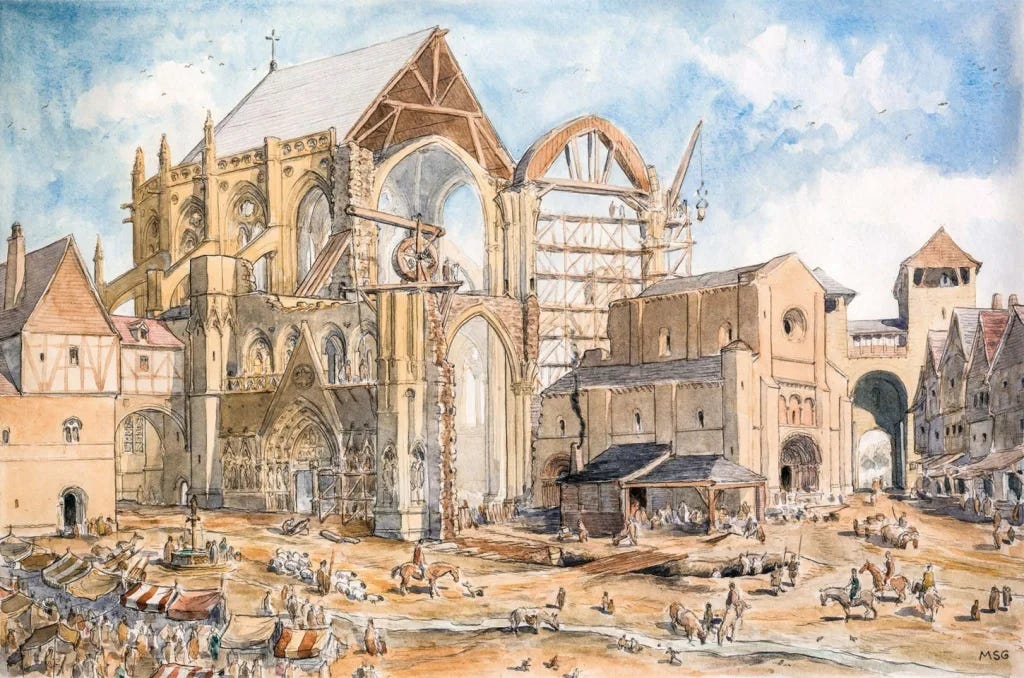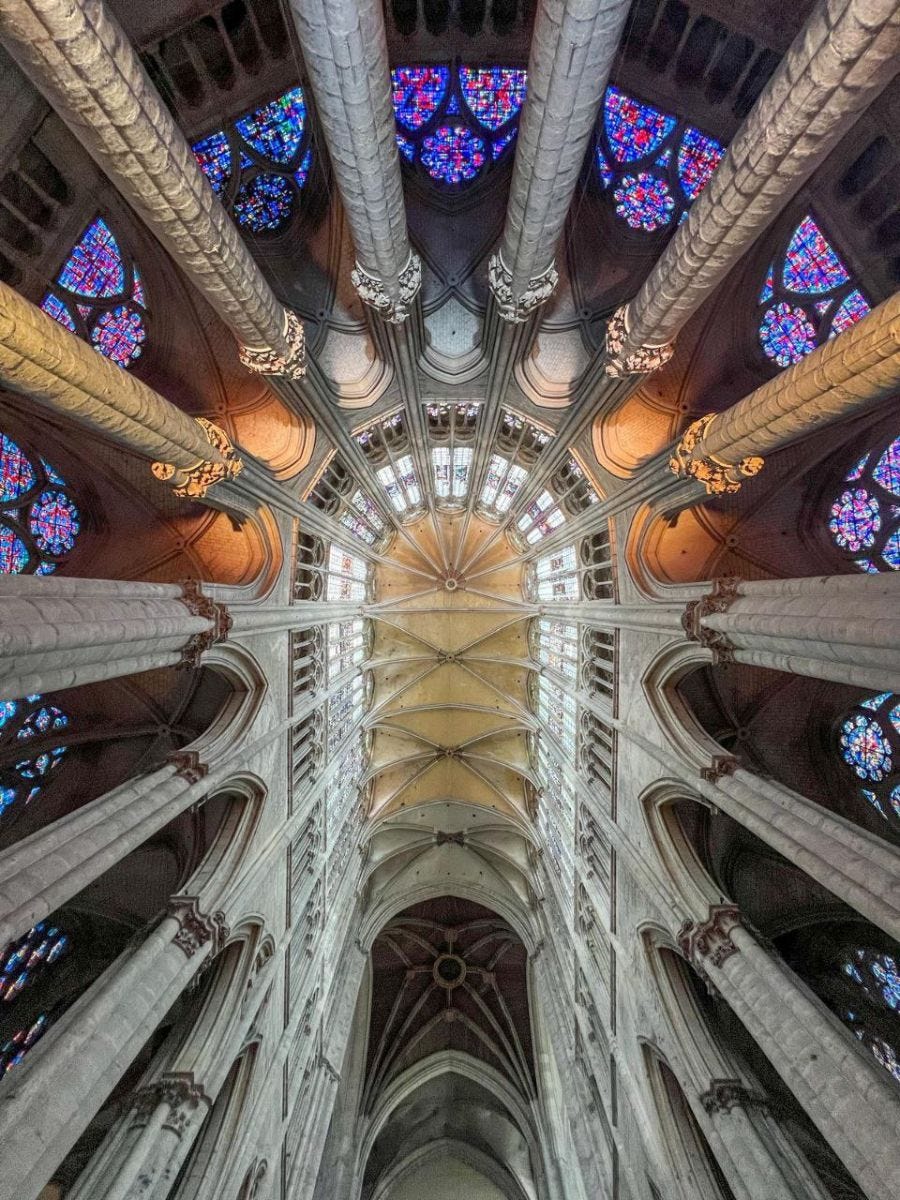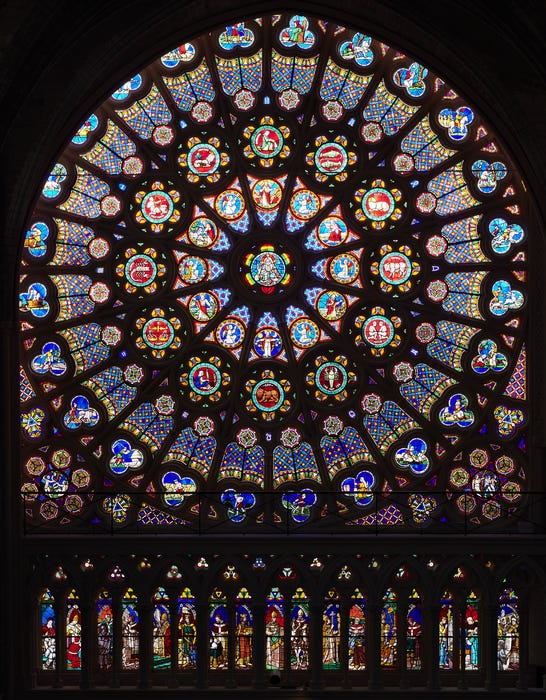Gothic cathedrals are marvels of medieval engineering. Behind their awe-inspiring facades lies a hidden secret: geometry. Medieval builders used complex mathematical principles, marking a significant departure from Romanesque architecture. In this article, we explore the seven secrets shaping Gothic geometry and how these factors contributed to the construction of these magnificent cathedrals.
The Origins of Gothic Geometric Knowledge
The transition from Romanesque to Gothic architecture in the 12th century represented a quantum leap in building techniques. While Romanesque builders relied primarily on massive walls for structural support, Gothic architects employed a sophisticated understanding of geometry to create soaring, light-filled spaces. This shift didn’t occur in isolation but resulted from a convergence of factors:
Classical Revival
A renewed interest in classical learning brought ancient Greek and Roman architectural texts, particularly those of Vitruvius, back into circulation. These works contained geometric principles that medieval builders adapted and expanded upon.Islamic Influence
The Crusades and increased trade exposed European builders to advanced Islamic mathematics and architecture. Islamic geometric patterns and structural techniques likely influenced Gothic design.Monastic Knowledge
Monasteries served as centers of learning where mathematical and geometric knowledge was preserved and developed. Many early Gothic builders emerged from monastic traditions.Practical Evolution
Geometric understanding in architecture evolved through practical experimentation as builders pushed the limits of stone construction.Guild Secrets
Stonemason guilds preserved and transmitted geometric knowledge as closely guarded trade secrets.Philosophical Shifts:
The rise of scholasticism encouraged a more systematic, geometry-based approach to architecture.Abbot Suger and St. Denis:
The reconstruction of the Abbey of St. Denis under Abbot Suger in the 1140s, often considered the birth of Gothic architecture, combined Neo-Platonic philosophy with practical building needs.
The Power of Geometry in Gothic Architecture
For Gothic builders, geometry was more than a tool—it was a superpower. They believed it formed a bridge between the earthly and divine realms, an idea that profoundly shaped every aspect of cathedral design. From overall proportions to the smallest details, geometric principles reigned supreme.
Key Geometric Shapes and Concepts
Several fundamental shapes formed the basis of Gothic design: the equilateral triangle, square, circle, and octagon. These simple forms combined to create complex, harmonious structures. The golden ratio (approximately 1:1.618), revered for its prevalence in nature and visual appeal, played a crucial role in determining facade proportions, window tracery, and the placement of key architectural elements.
Researcher Robert Bork has extensively studied the use of geometric ratios in Gothic design, demonstrating how these principles guided construction across Europe. Another important concept was “ad quadratum,” a Latin term meaning “to the square.” This design method used nested squares, rotated 45 degrees, to create a complex geometric framework that informed the layout of floor plans, the proportions of naves and transepts, and the placement of support structures.
The vesica piscis, an almond-shaped form resulting from the overlap of two equal circles, carried rich symbolic meaning for medieval builders. It helped determine the proportions of arched windows and doorways, the shape of vaulted ceilings, and the layout of iconic rose windows. Architectural historian Robert Odell has written extensively on the use of the vesica piscis in Gothic design.
Sacred Geometry in Practice
Real-world examples of geometric principles abound in Gothic cathedrals. Chartres Cathedral in France is a veritable textbook of medieval geometry. Researcher John James has shown how its west facade demonstrates perfect proportional harmony based on a series of equilateral triangles governing everything from overall shape to the placement of windows and sculptures.
Before the 2019 fire, studies of Notre-Dame de Paris revealed a plan based on a complex series of squares and circles, determining wall thickness, pillar placement, and even individual stone block sizes. Milan Cathedral showcases the use of triangular geometry, with its entire structure based on equilateral triangles creating a harmonious, unified design from ground to spire.
Tools and Techniques
Medieval builders relied on simple tools to apply complex geometry: compasses for drawing circles and arcs, squares for creating right angles, plumb bobs for ensuring vertical alignment, and ropes for measuring and creating large-scale geometric forms. These basic instruments, combined with deep mathematical knowledge, allowed for astonishing precision in construction.

The Significance of Geometry
Geometry in Gothic architecture served both practical and symbolic purposes. It ensured structural integrity, allowed for efficient use of materials, facilitated modular building techniques, and carried deep religious and philosophical significance. Historian Otto von Simson’s classic work “The Gothic Cathedral” explores the profound connections between geometry, theology, and architecture in the medieval mind.
Legacy
The geometric principles of Gothic architecture continue to influence designers, from Renaissance architects like Brunelleschi to modern visionaries like Le Corbusier and contemporary parametric architects. The leap from the massive walls of Romanesque buildings to the soaring vaults of Gothic cathedrals was made possible by a synthesis of ancient wisdom, new ideas, and bold experimentation.
Understanding this context deepens our appreciation for the revolutionary nature of Gothic architecture and the ingenuity of its builders. Gothic cathedrals are more than beautiful buildings—they are geometric puzzles that showcase the culmination of centuries of accumulated knowledge, cross-cultural exchange, philosophical shifts, and practical innovation.
Next time you visit a Gothic cathedral, look closely. You’ll discover a hidden world of lines, shapes, and proportions that bring these stone giants to life, testament to the ingenuity and vision of medieval builders who used geometry as their secret weapon in creating architectural marvels that continue to inspire and awe us centuries later.






